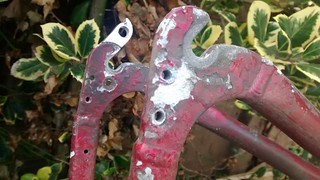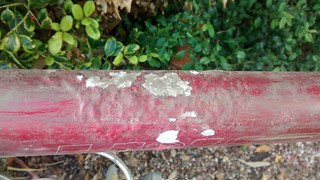I'm assuming an off-the-peg EBC alloy frame is 6061 alloy;
From;
http://www.ihpva.org/projects/practicalinnovations/materials.html
Aluminum corrodes
Yes it does. The 6061 series of aluminum has good corrosion resistance. However, if left partially submerged in a salt water it will eventually corrode. Once aluminum is placed in an oxygen environment it builds a protective layer of oxidation. Although this layer plays havoc during any welding process, it does protect the aluminum from many outside elements. As for bicycle frames, this corrosion is benign as it possesses no threat to the structural integrity. The same cannot be said about steel. It can and will rust. If left unchecked, a rusting steel frame shall fail.
From what I've read it does sound more like catalytic corrosion. Recommendations seem to be to remove the offending paint areas, feathering the edges of the good paint, and buff the corrosion out with wire wool and/or a Dremel back to the aluminium, then allow that to naturally form its protective oxide coating (won't take long if it's dry and free of salts) before priming and re-painting.
Other option is take all the paint off the whole frame and polish it up with an aluminium polish ("Mother's" brand) as used on alloy car wheels and under the bonnet by the sort of people who like a clean and shiny engine bay. I'm not sure how frequently you'd have to polish it...

 not resolved
not resolved



 posts
posts
